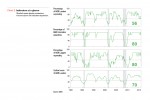Economy
The Fed and global growth are the main themes for 2016.
As of early December, the Fed had given strong indications that it would likely begin raising short-term interest rates this month by pushing up the federal funds target rate. Starting the credit-tightening cycle is an important milestone in the economic expansion. However, more important for future economic performance is the pace of rate increases.
In many of their public statements, Fed policy makers have stressed their intention to increase rates gradually to avoid undermining growth. Infrequent and small rate increases will be more easily absorbed by consumers and businesses. Higher borrowing costs tend to restrain consumer spending and business investment. Slower rate increases may also soften the upward pressure on the dollar from the policy liftoff. The rising dollar already has had a negative effect on U.S. exports and imports as well as global commodities.
Global growth is the second area that could significantly affect the American economy. While the U.S. depends less on exports than some other developed markets, the combination of a rising dollar and weak international economies can still have consequences. The secondary effects on global commodities and capital flows, as well as overseas profits earned by U.S. multinational companies, can also influence U.S. economic activity.
Ongoing economic struggles in Europe, compounded by the Nov. 13 terrorist attacks in Paris, the ongoing refugee crisis, stagnation in Japan, difficulties in emerging markets across Latin America and Asia, and the recent slowdown in China can all have a negative influence on the U.S. Forecasts from the International Monetary Fund suggest global economic growth could remain weak next year (Chart 1), leaving the U.S. to rely even more on internal growth drivers, particularly consumer spending and business investment.
We will be watching a range of other key indicators that reflect the evolution of the current business cycle. The most important ones are shown in Table 1.
Economic Outlook
Coming in January: a new Business-Cycle Conditions model
In our November evaluation, 56 percent of our leading indicators were trending higher, up from 50 percent in October. November marks the 75th consecutive month at or above 50 percent. With our Leaders’ index rising to 56 percent and our cyclical score holding at 70, we see little recession risk over the next six to 12 months.
The proportion of expanding coincident indicators held at 80 percent in November, reflecting some ongoing weakness in the economy. Among our six coincident indicators, four were viewed as clearly expanding while one was viewed as probably contracting. One was evaluated as having an indeterminate trend. All four expanding indicators reached new cyclical highs.
The proportion of lagging indicators judged to be expanding dropped to 80 percent in November from 100 percent in October. Four indicators were expanding and hit new cycle highs, while one had an indeterminate trend and the sixth was probably contracting. Overall, the percentage of expanding leading indicators and the cyclical score for our leading indicators suggest an expanding economy and a relatively low probability of recession (Chart 2).
Next month AIER will introduce an updated version of our Business-Cycle Conditions model. One of the most important changes is moving the subjective element from the model calculation to the model interpretation. Under our current model AIER researchers review each indicator qualitatively and evaluate the trends. In the new model trends are assessed quantitatively. Researchers then will use their knowledge of the economy to interpret their meaning. We are confident that the new model will offer new insights into business-cycle trends.
Click for interactive Indicators at a Glance (on mobile device turn to landscape)
Next/Previous Section:
1.Overview
2. Economy
6. Pulling It All Together/Appendix




